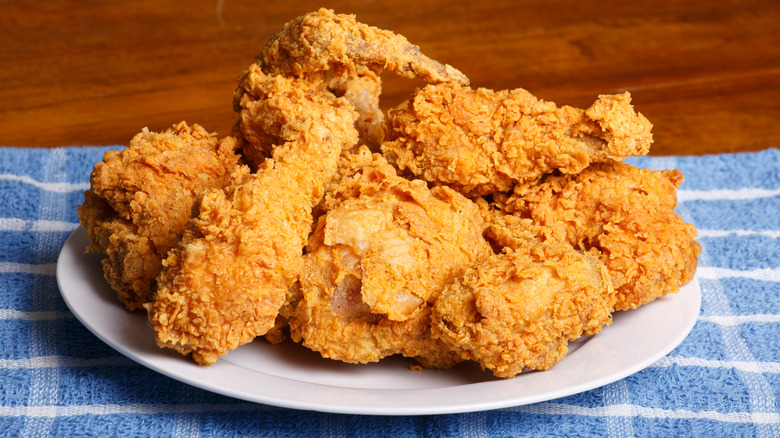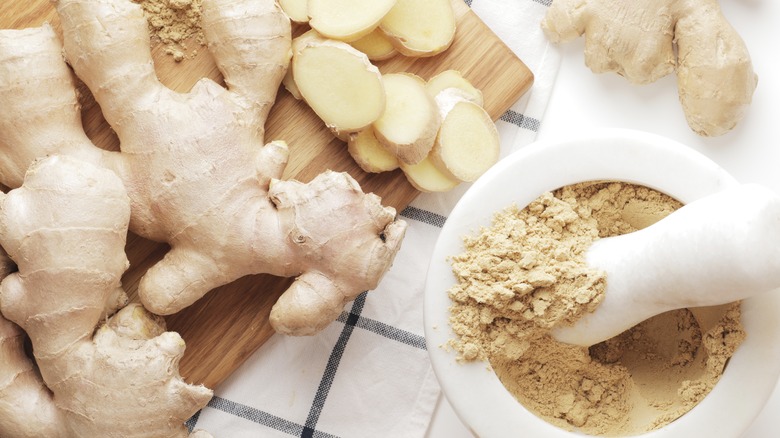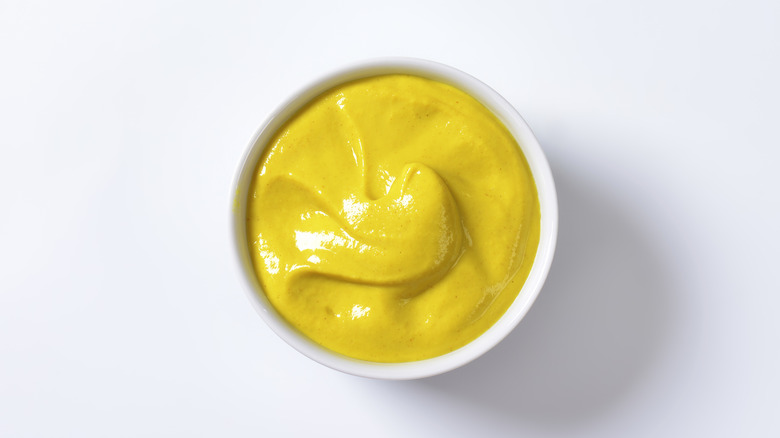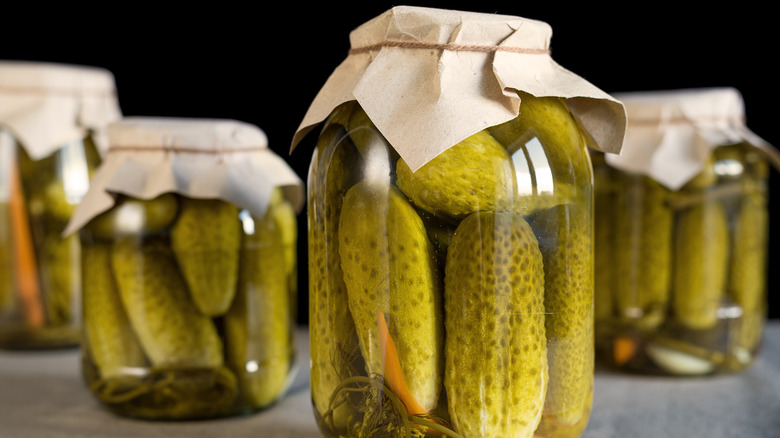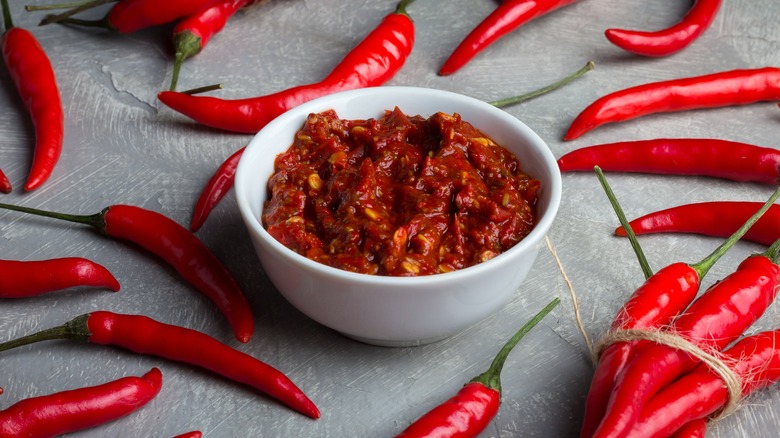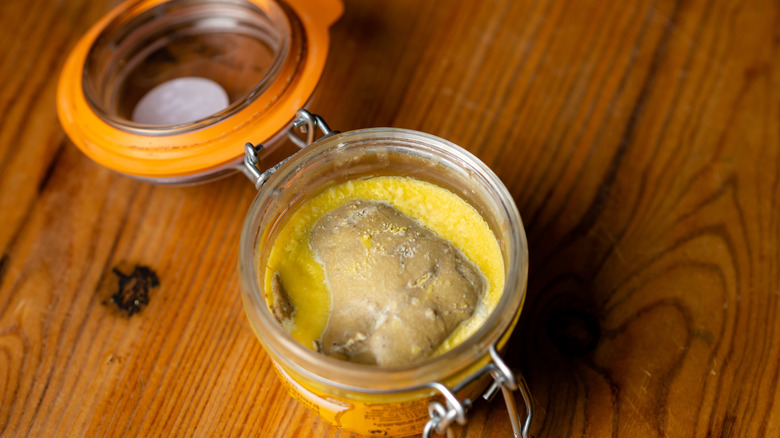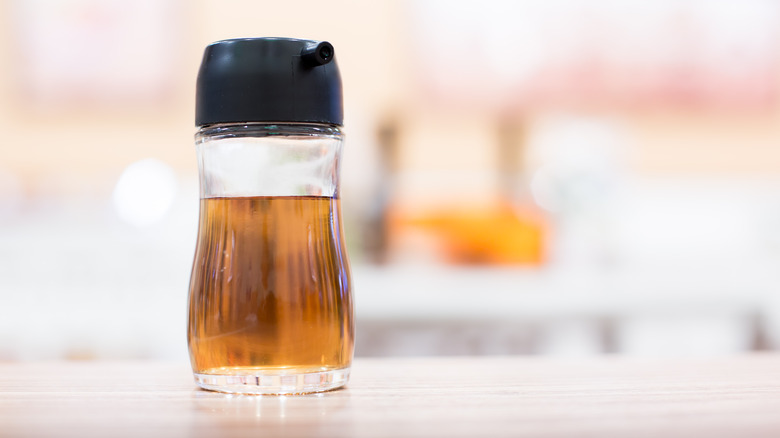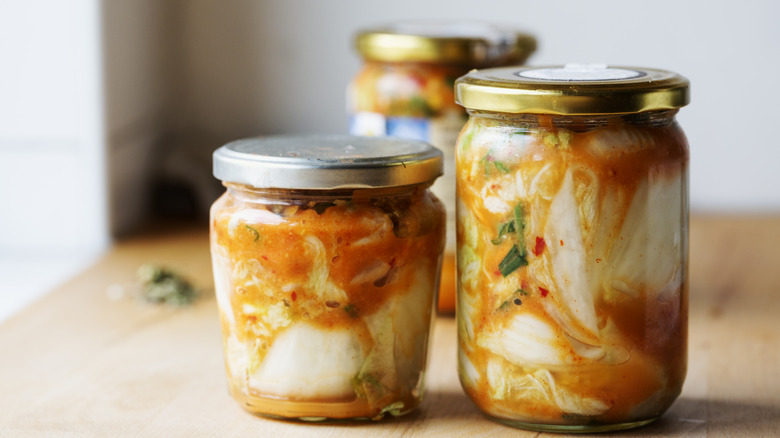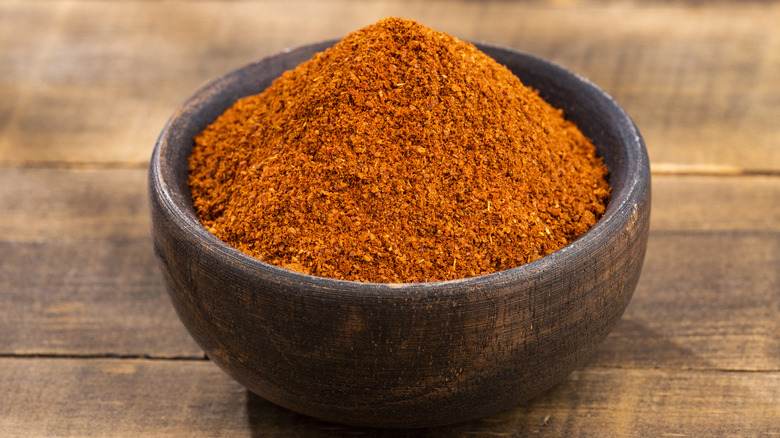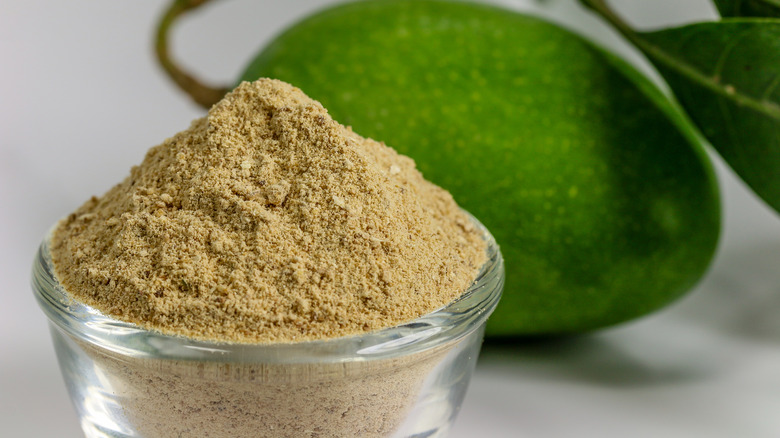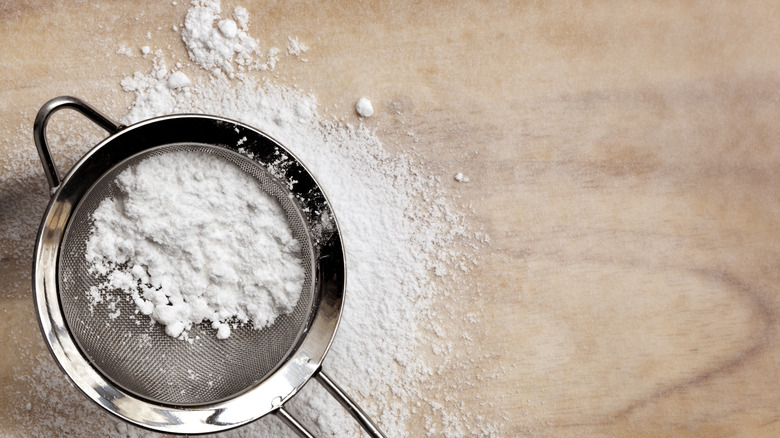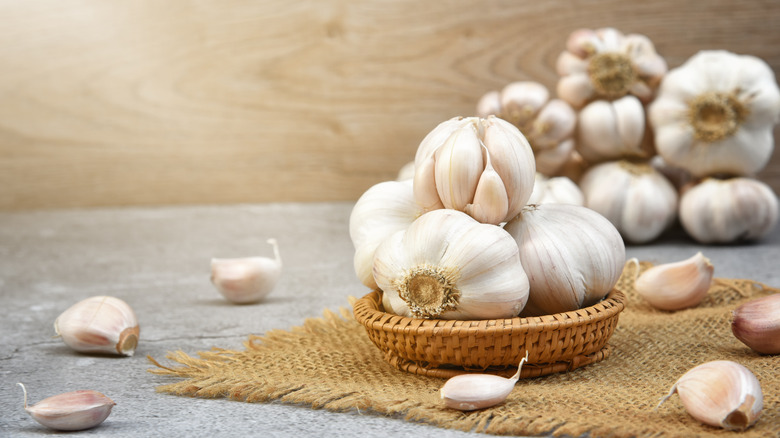13 Condiments That Will Boost The Flavor Of Fried Chicken
There are ways to make fried chicken more delicious. Brines, spices, and marinades can all make your fried chicken even more impressive than it already is. And it isn't even that difficult to upscale. You can add whichever flavors you happen to enjoy to your fried chicken.
Or try a cultural excursion and add a taste of far-off lands to your next batch of fried chicken. Asian influences will work wonders, and you can use any that you like. You can add them to your brines and marinades or even put them right into the oil in your fryer.
And not only will brines, marinades, and seasoning make your chicken tastier, but many of them will also give your chicken a juicier, more tender, and crispier skin. Another common trick to boost your next batch of chicken is adding some alcohol. Beer and vodka both have an impressive impact.
In addition, don't underestimate how you prepare your fried chicken. Basic, storebought oils may be easy to come by, but other options will create a crispy, delectable crust on the outside of your chicken and boost its flavor, too.
1. Ginger
Ginger is not only a flavorful addition to your chicken, but it's also a healthy one. According to Hopkins Medicine, ginger helps to alleviate nausea and reduces bloating and gas. It can also minimize some of the wear and tear on your body's cells and may even act as an inflammatory agent.
If you're looking to use ginger to spice up your next batch of chicken, try making Ginger Karaage Chicken. This recipe uses a Japanese-style preparation of fried chicken as developed by Michael Anthony of Gramercy Tavern. He lived in Japan for a year and learned from the locals how to make this traditional dish before creating his own version and giving it a slightly more western spin.
To try this treatment, bathe your next batch of fried chicken in a marinade of ginger, garlic, soy sauce, rice wine, sugar, and sake. It will help the potato starch coating stick to your chicken and give it a distinct flavor you won't get from any other combination. And don't worry about those hard-to-find ingredients.
If you can't find them in the ethnic foods section of your local grocer, and you don't have Asian markets in your neighborhood, there are simple swaps you can use. No shiso leaves? Use basil. Can't find Sansho pepper powder? Try ground peppercorns instead. You can even use cornstarch if there's no potato starch locally available.
2. Mustard
This addition to fried chicken is as practical as it is delicious. After all, you need something to help the flour stick to your chicken before it goes into the oil to fry. Why not use an adhesive with some flavor?
You can use a whole chicken you divide yourself or buy pieces for this mustard fried chicken recipe. Either way, you'll want to soak it in buttermilk first. This ensures your chicken will stay moist and tender. But this isn't the only treatment you'll give your bird before you top it with mustard. Mix salt, cayenne, and paprika with your buttermilk, and let your chicken have a good long soak before you prepare it to go into the oil. It needs a minimum of four hours and a maximum of twelve.
Once your chicken is sufficiently soaked in buttermilk, remove it from the marinade, pat it dry, and then baste it with mustard. Either plain or Dijon mustard will work. Next, dredge your chicken in a mix of flour, garlic, onion, and seasoning salt, and fry in 375-degree cooking oil for about ten minutes. It's delicious hot or cold. If you want to reheat it, put it on a baking sheet in a 400-degree oven. Want even more mustard flavor? Try serving it with a homemade honey mustard sauce.
3. Pickle juice
Not only will brining the chicken in pickle juice give it an incredible flavor, but it will also help tenderize the meat. This Tasting Table pickle juice brine fried chicken recipe, when paired with bathing in buttermilk, might lead to the crunchiest, juiciest chicken you've ever eaten.
Start by putting your chicken in pickle juice in either a jar or a bowl. If you're the type who buys your pickles in the oversized jars you can only find in Costco or other bulk stores, you can put your chicken right in the jar your pickles came out of. You'll have to eat the pickles first, of course. But if you're buying them in bulk, is this really a problem?
Even if you don't buy in bulk, this isn't too difficult if you plan ahead. Keep a couple of jars of juice after your pickles are gone, and use them when you're ready to brine. How long you leave them to soak depends on how much flavor you want the chicken to have. Anywhere from six to twenty-four hours is sufficient.
Once your chicken is out of the pickle juice, submerge it in some buttermilk. It can soak in this solution for one to twelve hours. If you're following The Tasting Table's recipe, you're making a sandwich, so mix up some seasoned slaw while your chicken marinates. Once your chicken is thoroughly marinated, dredge it and fry the chicken, and then serve it on rolls with spicy coleslaw.
4. Harissa
Harissa, a hot chili pepper paste, is a delightful accompaniment to just about anything. And you could certainly use it as a dipping sauce for your fried chicken. Or you could kick things up a notch and brine your chicken in a blend of mild or spicy harissa mixed with buttermilk or yogurt. Serve it with homemade or store-bought tahini.
The best news about this recipe is that harissa comes in both mild and spicy varieties. If you want to try making your foods a little spicier, you can do it with a harissa fried chicken without worrying about scalding your tongue or the roof of your mouth. Serving this chicken with tahini will help temper some of the spicinesses, so it's a perfect gateway experience to increasing your tolerance for spicy foods.
A bit of paprika in the batter will give your chicken a sweet and slightly smoky flavor in addition to the heat you're getting from your harissa. But you'll need to keep your cooking oil temperature consistent for the best results. Maintain an oil temperature of 350 degrees Fahrenheit. If your chicken starts to get too well done on the outside, take it out of the oil. You can pop it into a 350-degree oven to finish cooking on the inside. Drying out your chicken is one of the easiest ways to ruin it.
5. Duck or bacon fat
A great batch of fried chicken comes not only from brines, marinades, and seasonings but also from the oil you're cooking it in. Famed Los Angeles chef Ludo Lefebvre recommends swapping out your more traditional oils for duck fat to give your chicken an excellent, crispy coating and a fabulous flavor.
Because duck fat also comes from poultry, it will complement your chicken perfectly. It also gives it a lustier flavor because duck is naturally a darker, fattier meat than chicken. Duck fat also has some health benefits, making it better for you than oil.
No duck fat on hand? Try bacon fat instead. It will give your chicken a smoky flavor. The best options for this route are hickory or maple-smoked varieties because they will be more flavorful.
If you have enough bacon fat to fully submerge your chicken for cooking, by all means, use it. This will give you the most flavorful result. But not to worry if you don't. Add some bacon fat to whatever oil you were planning to fry in. The oil and your chicken will pick up the smoky flavor and still benefit from the addition.
6. Fish sauce
You can use fish sauce to create Thai Fried Chicken. There are a couple of things that make this particular variety of fried chicken spectacular. Marinating it in fish and soy sauce gives your chicken a salty flavor.
And the sugar included in the dredge for your coating caramelizes into a thinner crust than you would find in traditional fried chicken but a surprisingly crispy one. And the two combine to create a delightfully sweet and salty taste. Besides fish and soy sauce, you'll also need cilantro and peppercorns for this marinade.
Though this is a Thai marinade, and fish sauces are typically associated with Asian foods, this salty, savory condiment was likely invented in Greece (via Seconds Food History). The Romans used to mix salt with fish parts and leave the mixture to ferment in the sun.
Today, fish sauce has developed into a less expensive, more common version that now features in many dishes. Today, it can be purchased in ethnic food sections of general grocery stores, higher-end locations like Sprouts and Trader Joe's, and Asian markets.
7. Kimchi
Kimchi works with your fried chicken for many of the same reasons as pickle juice. It contains salt and acid, which helps tenderize your fried chicken, but it has different spices than your pickles. Kimchi contains garlic, ginger, fish sauce, and Korean chili flakes. You should be noticing a trend here. Many of the ingredients that are complementary to your fried chicken, like ginger and fish sauce, combine in this condiment to give you the best of both worlds.
Additionally, kimchi contains cabbage, so you'll need to purée it first to make it smooth. Then mix it with two cups of buttermilk and an egg. Add your chicken and let it soak for at least four hours: Overnight is ideal. If you don't want or have the means to purée your kimchi, you could just use the leftover juices. If you do this, you'll need to reduce the amount of buttermilk you add to one cup.
When you're ready to fry, remove your chicken from the brine and dredge it in a blend of ingredients that will turn into a coating when you fry your chicken. Storebought kimchi is the best option for this version of fried chicken unless you have the seven to ten days necessary to let the homemade variety ferment.
8. Vodka
The secret to getting the crispiest chicken? Get it a little drunk. Add some vodka to your marinade before you fry your chicken for the crunchiest fried chicken you've ever tasted. You'll need to add the alcohol to your marinade or brine so it has a chance to thoroughly treat your chicken before frying.
Why does this work? According to Business Insider, adding vodka increases the surface area of your chicken. This is because vodka is more volatile than buttermilk or other liquids you traditionally use in a marinade; it evaporates more quickly.
This creates large vapor bubbles that infiltrate the nooks and crannies in your chicken. Since the oil has reached these pockets in the chicken, more of the chicken is susceptible to becoming crispy and crunchy when fried.
It also makes the naturally occurring water in your chicken evaporate faster, so the crust on your chicken turns out exceptionally light and crispy. Vodka works best because it doesn't have a flavor you can taste in your finished food. But any hard alcohol will work, so long as it's a flavor you don't mind having as an accent to your fried chicken.
9. Beer
This "secret" ingredient should really come as no surprise: Who hasn't heard of beer-batter? You're most likely to encounter beer batter in fish, but it can also be used for chicken. But, as Scientific American explains, beer works in the batter for any fried food for a few reasons.
Adding beer to your batter mix adds the three essential ingredients to create a light, crispy, flaky crust: Alcohol, foaming agents, and carbon dioxide. Because gases dissolve faster at lower temperatures, the batter expands when your beer-battered chicken hits the hot oil, creating a lighter, crispier coating than you would get using other ingredients.
The foaming agents also help diffuse the heat of the oil. The foaming agent focuses on the batter, making it crisp without overcooking the chicken inside. This prevents the oil from penetrating deep into the chicken. This is one of the reasons beer batter is often used for delicate fish dishes.
However, because you need the carbon dioxide and foaming agents to remain intact, you won't use beer in a marinade or brine that sits for several hours because its most effective properties would dissipate before you could use it.
The recipe for these beer-battered chicken bites instructs you to mix Guinness with your dry ingredients before you dip your chicken in it. Then you'll dredge the chicken in flour and immediately put it into the oil. Whip up the accompanying signature barbecue sauce for a meal that will wow your family and friends.
10. Paprika and cayenne
This fried chicken recipe starts with buttermilk, which is one of the most traditional treatments you can give your chicken before it goes into the fryer. But it's hardly the only ingredient because, while buttermilk makes for some of the moistest chicken you'll eat, it doesn't have much flavor.
Blend your buttermilk with paprika and cayenne pepper to give it a spicy kick. You'll also need garlic, celery seed, sugar, and salt. This creates a super-concentrated brine that flavors your chicken in a short amount of time. Let your chicken soak for 1-4 hours to make it tender and delicious, but don't leave it any longer, or it may end up overly salty.
Remove your chicken from the brine, rinse, and pat dry. Let it sit while you mix up the coating. Combine flour, salt, celery seed, ground pepper, and cayenne. Preheat your oil and dredge your chicken in the flour. Then dip it in a second coating of plain buttermilk and back into the flour, then submerge it in the oil.
Be careful not to overfill your pot. Your chicken needs space to fry efficiently. Put in just one or two pieces at a time. Leave it in until it becomes golden and crispy on the outside. If your chicken isn't 165 degrees on the inside when you take it out of the oil, finish it in an oven heated up to 350 degrees Fahrenheit.
11. Dried mango powder
Not only does Padma Lakshmi dust her chicken with dried mango powder, but she also coats it with rice crispies and saltines. Start by soaking your chicken in salted buttermilk. Marinate in your refrigerator for 8 to 10 hours, drain the buttermilk and let the chicken rest.
While your chicken is coming up to room temperature, mix flour, rice crispies, crushed saltines, more salt, dried mango powder, and cayenne. Dredge your chicken in the flour mixture, then coat it with a beaten egg and put it back in the flour mix again. Lay your chicken on waxed paper on a baking sheet and let it rest for about 30 minutes.
Fry your chicken in small batches so that the crust doesn't get too dark before the chicken reaches 160 degrees Fahrenheit. Drain on paper towels and serve. Lakshmi likes using dried mango powder because it gives the chicken a boost of fruity flavor without adding extra liquid to the batter.
12. Powdered sugar
It started as a mistake that went viral on TikTok. And it may sound crazy but think about it for a minute. Chicken and waffles is a popular dish, and this is a way of combining the two. According to The Sun, the accidental creator of this fried chicken variety also compared the taste to funnel cakes and said the happy accident is even better with some hot sauce splashed on top.
She explained that she grabbed what she thought was flour from her pantry and dredged her chicken in it before frying. She didn't realize what she'd done until she tasted it. Other foodies explained similar mistakes they'd made in the past and told her she'd managed to combine chicken and waffles into one meal.
Some viewers were skeptical if her use of powdered sugar was a mistake. But whether she intended to make sweetened chicken or not, the flavor was a hit. Consider making the swap yourself the next time you make fried chicken.
13. Garlic
What could be better than a garlicky fried chicken that calls for a garlic brine and a dredge with garlic powder? Garlic, when combined with buttermilk, will make your fried chicken taste like ranch dressing. And you can always serve it with a side of ranch if you want even more flavor.
You'll need to be a real garlic lover if you want to try this recipe. Begin by marinating your chicken in a blend of buttermilk, garlic powder, garlic cloves, and salt.
While your chicken marinates, mix flour, salt, garlic powder, parsley, onion powder, chives, and light brown sugar. The sugar may seem like a surprise, but as we've already discussed, a touch of sweetness can make a real difference to your chicken. It helps by caramelizing the crust, and aids in the flavor, too.
Like many sauces, the ranch dressing this recipe is based on combines a blend of sweet and salty. The bit of sweetness added by the brown sugar in this recipe serves almost entirely to temper the saltiness of the garlic powder blend and prevent the garlic from making it too spicy.
